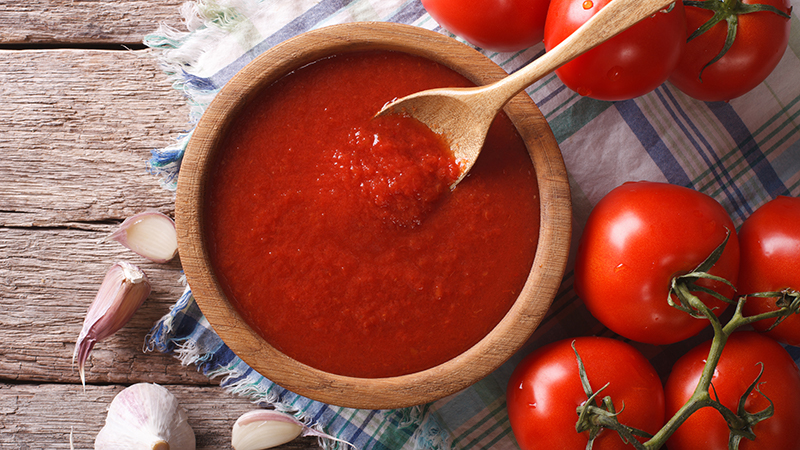
The best sauces add flavor, color, variety, nutritive properties, and can turn leftovers into a gourmet meal. Even simple ones work well.
Call it dressing, salsa or a sauce, adding this tasty companion to almost any healthy dish can make it more appealing and nutritious. Making your own sauce is simple.
Basic Butter Sauce
The most basic of sauces is also the easiest to make — simply unsalted (sweet) butter and sea salt. It’s often used to top cooked vegetables, but also is useful for cooking meat, fish or eggs. While vegetables are still hot, simply add butter and salt, or add butter and salt to the pan before cooking meat or eggs. Even those who never liked vegetables will usually eat them with a butter sauce.
Options:
- Sauté garlic or onions with or without some spices in the butter.
- Combine with a small amount of extra virgin olive oil.
A Note about Butter
“Sweet” or unsalted butter is made without salt. The cream used to make this butter is a higher quality and tastier than that used for salted butter. In addition, “pure” butter is best for cooking.
Ghee or Clarified Butter
Always having this pure butter in the kitchen ready for use is easy — it does not need refrigeration, will stay liquid, and does not burn like regular butter.
Melt one pound of sweet (unsalted) butter and bring just to the point of low boil to allow separation of solids (mostly proteins) and fat. Skim off solids that rise to the top or may sink to the bottom as it cools (these solids can be added to vegetables, soups, homemade cacao, Phil’s Bars or other sauces). Use the clear butter (ghee) like any other butter.
Basic Tomato Sauce
This is a quick and easy, tasty, and healthful all-around red sauce.
- Add chopped fresh tomatoes or whole canned tomatoes in an uncovered pot and boil fast (not a simmer) stirring to prevent scorching until desired consistency — this may take an hour or more depending on the volume, how thick you want it, and the pot size (larger is faster, and you also can do this in a frying pan very quickly). Let cool uncovered and it will thicken more, and left uncovered in the fridge will do the same.
- Add salt.
When reduced to a thicker sauce, tomatoes take on a unique taste all their own. Even without adding any spices other than salt, you’ll have a great-tasting sauce. (People may ask you for the recipe!) You can freeze it in small glass containers.
Options:
- Once you have the basic sauce, for any given recipe you can add spice to it such as sautéed garlic, or chopped parsley, basil, turmeric, hot pepper, or other spices.
Simple Salsa
Chop by hand or in a food processor: about 3-4 ripe tomatoes, ½ onion, jalapeno, parsley or cilantro, garlic, juice of ½ lime, sea salt.
This is great on scrambled eggs or omelets, meat, fish or other dishes, especially leftovers.
Dressing is Sauce
While a simple olive oil and balsamic vinegar added to a salad with a sprinkle of salt is delicious, having a more complex dressing adds zest. Here’s an easy one to always have available, with enticing options.
Phil’s Salad Dressing
In a blender, mix 8 ounces extra-virgin olive oil, 2 cloves garlic, 2 ounces or more apple cider or balsamic vinegar, 1 to 2 tablespoons fresh or dried parsley or cilantro, 1 to 2 teaspoons sea salt, and ½ teaspoon mustard.
Once you have the basic dressing, there are many variations. Here are some options to blend in:
- Creamy — add 1 to 2 tablespoons heavy cream or full-fat yogurt.
- Green — blend in ½ to 1 avocado.
- Red — add 1 to 2 tomatoes.
- Citrus — use the juice from ½ to 1 lime in place of the vinegar.
- Asian — replace 4 ounces of olive oil with raw sesame oil. For a spicy version, use some rice wine vinegar and add a small amount of sesame tahini, miso and grated ginger.
Shake well before serving.








